-Ajoupas du Lagon peinier, appellé le Cirque des Bambous-
Description/notes: View of bamboo huts or dwellings on the island of Saint-Domingue, present-day Haiti. Also includes an alligator. The corresponding text discusses a lagoon in Saint-Domingue.
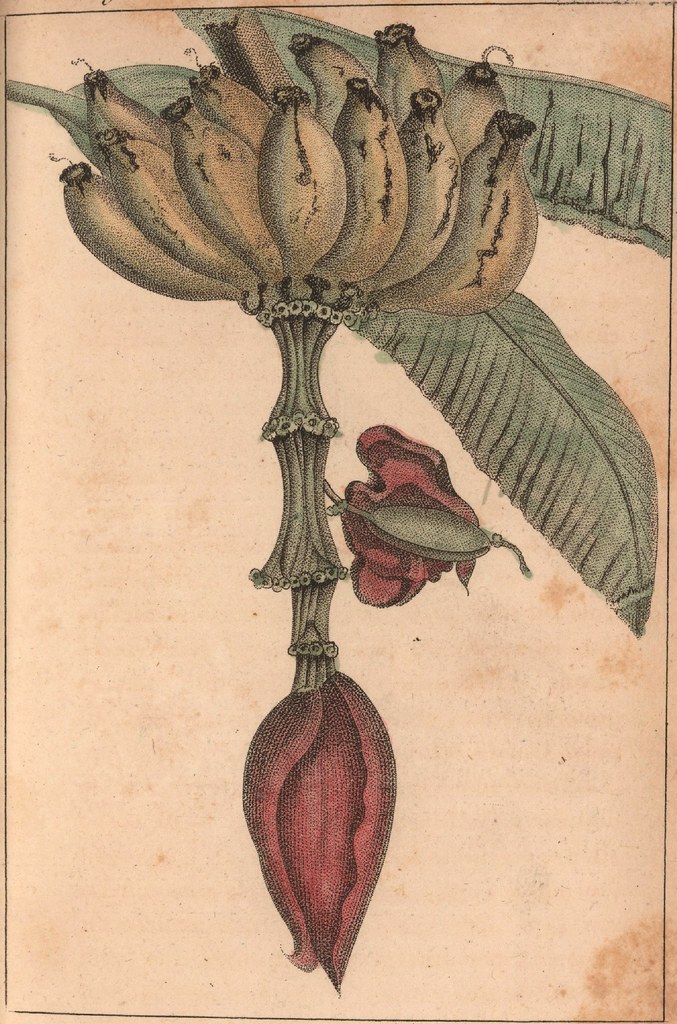
-Patte de Figues bananes sur le régime terminé par la Popotte-
Description/notes: Cluster (patte) or hand of bananas. The banana tree was introduced into the Caribbean by Spaniards and other Europeans in the sixteenth century. In 18th/19th century-French Caribbean, they were called 'figues'. The figue banane now refers to a small banana about 12 cm. long.
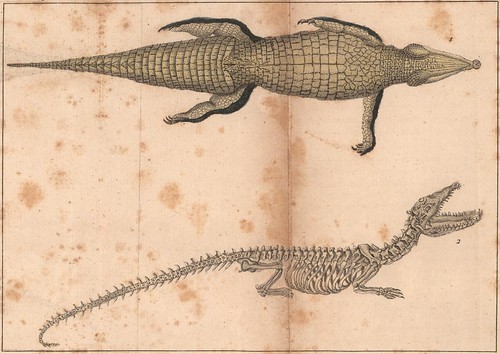
-Cayman vu sous le Ventre. Fig. Iere. Son Squelette. Fig. II.-
Description/notes: Body of a caiman* and its skeleton. The text provides extensive description of the animal, as well as charts comparing it to other members of the crocodile family.
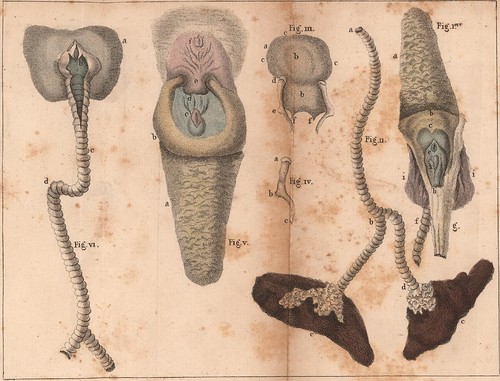
-Anatomie de la Langue, du Larinx et de la Trachée Artere du Cayman-
Description/notes: Diagram of the tongue, larynx and trachea of a caiman. The text provides an extensive description of the author's dissection of the animal.

-a. Apocin Corne Cabrit. b. Ap. Hérissé. c. Mancelinier. d. Azédarach, e. Quebec, f. Karapaf des Poules. g. Scorpion, h. Bête à millepieds, i. et k. Areignées crabes, l. et m. Areignées à Cul rouge, n. leurs oeufs-
Description/notes: Various land insects including black widow spider [?] and its eggs, scorpion, millepede, and the plants that shelter them, including the mancenillier or manchineel (Hippomane mancinella): all parts of this tree* are poisonous. [A present-day Spanish name is in fact manzanilla de la muerte, "little apple of death".]

-a. Sapotille. b. le Mango. c. Cirouelles. d. Pomme rose. e. Fruit du Mombin-
Description/notes: Sapodilla fruit, mango fruit, cirouelle fruit, rose apples, and a plum-like fruit known as mombin. Items are lettered for identification in adjacent text.
The sapodilla (Manilkara zapota) is native to the Yucatan and Mexico and has spread throughout the Caribbean. Its sap was used as a gum by the Maya. Mangos (Mangifera indica) are native to southern Asia. Cirouelles (Spondias purpurea) are also known as mombin rouge. The pomme rose or rose apple (Syzygium jambos) is originally from India and was introduced to Jamaica in 1762, spreading to the rest of the Caribbean from there. Mombin fruit or a kind of plum (Spondias mombin) is native to South America and common in the West Indies.

-Thalie vulgt. Galère, ver zoophite de l'ordre des Molusqueae-
Description/notes: Sea creature, perhaps a sea cucumber. The accompanying text states that the creature was brought up in a bucket after his ship had crossed the Tropic of Cancer, perhaps off Brazil.
{Ed. As has been pointed out in the comments, this specimen is most likely a Portuguese man o'war [Physalia physali]}
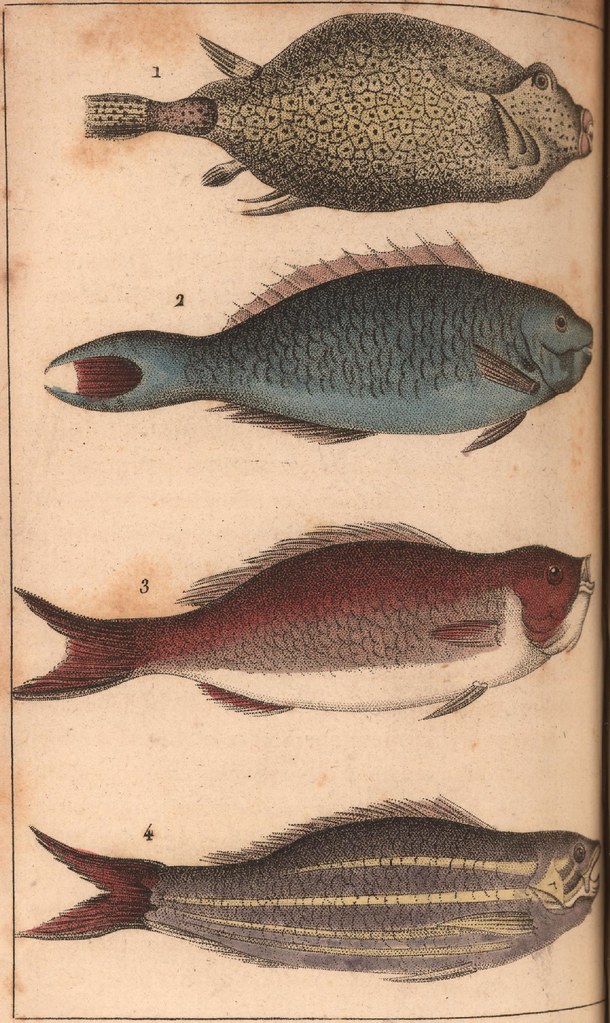
-Poisson de Mer . 1. l'Ostracion à bec et à deux piquans. 2. Coryphène Perroquet. 3. Spare Cardinal. 4. Bodian Vivano-
Description/notes: A kind of box fish, a coryphène or mahi mahi-like fish, a cardinal fish, and a bodian vivano. The text states that the box fish was not particularly tasty. The coryphène was considered a delicious fish. The cardinal fish is a small nocturnal fish of the family Apogonidae. The bodian vivano is noted for its agility. The author discusses the method used to catch the fish and the taste and preferred cooking and preserving method for each fish.
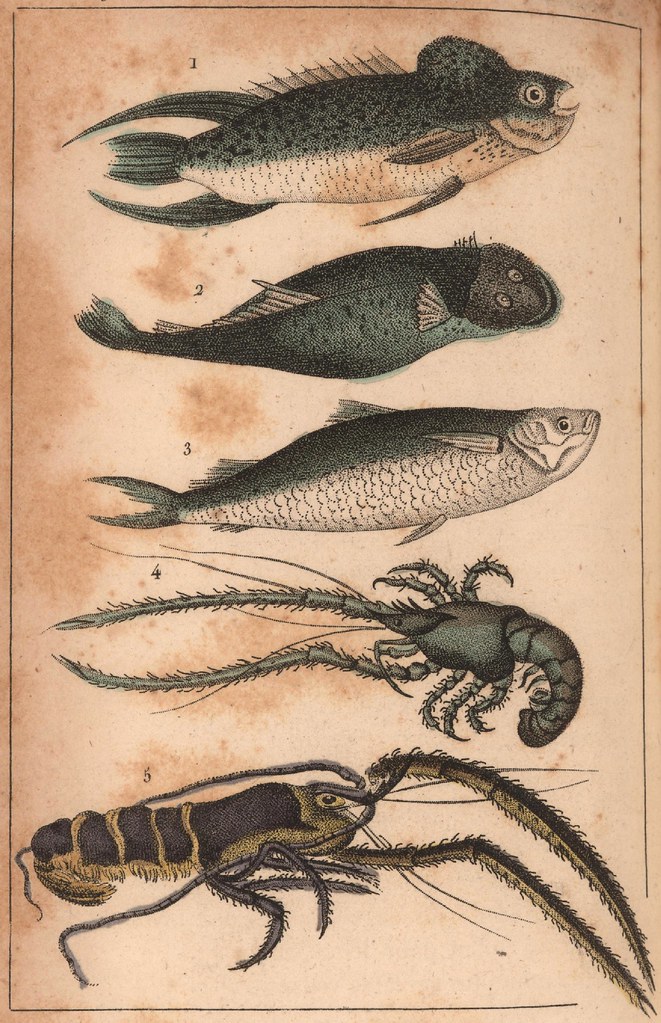
-Poissons de Riviere. 1. Kyphose Haut-Dos. 2. Gobiésoce Testar 3. Mulet de l'Artibonite. 4. Ecrevisse de l'Ester 5. Ecrevisse de l'Artibonite-
Description/notes: Several fishes: a kyphose, a gobiesoce testar [Gobiesox testar], a mullet from the Artibonite river or region of Haiti, a crayfish from the area of Ester (near present-day Port-au-Prince), and a crayfish from the Artibonite river or region.
The Kyphose may be a kind of sea chub (kyphosidae); text notes the typically deformed back of the fish. The author discusses the taste and preferred cooking and preserving method for each fish.

-a. le Citronier des Haies. b. Fruit de l'Abricotier-
Description/notes: Branches and fruit of Caribbean versions of lemon and apricot trees. Text notes that the apricot was unlike the European apricot; it may be Mammea americana, the mammee apple, or St. Domingo apricot.
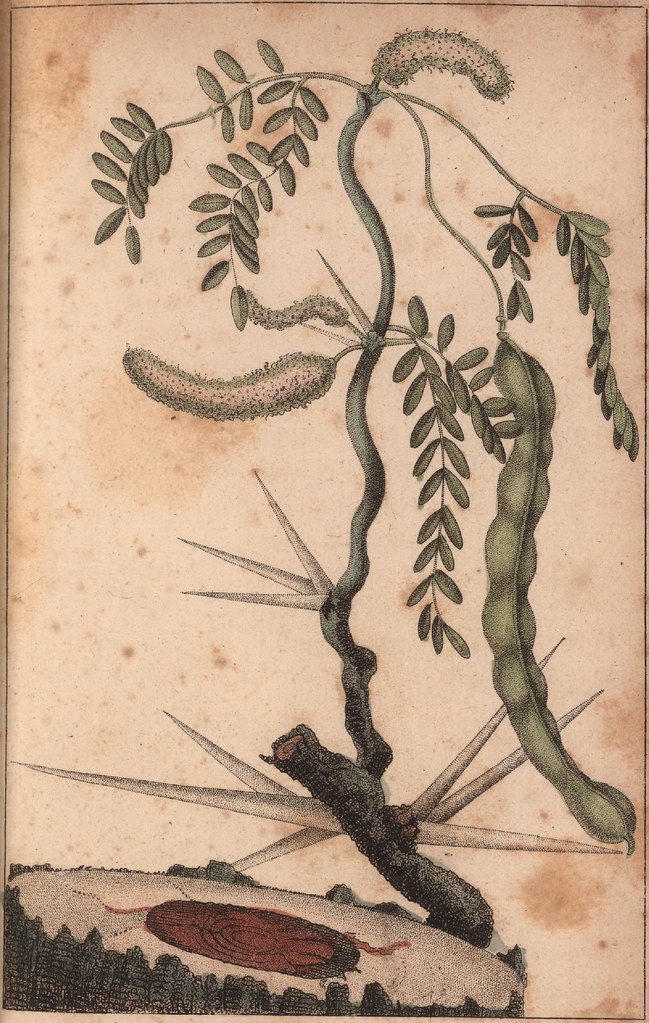
-La Baie-à-ondes. Arbre pernicieux dans les Hattes-
Description/notes: Branch, thorns, seed pods, flowers, and cut trunk of the baie-à-ondes tree, perhaps a member of the genus Acacia. The scientific name for one of the Caribbean acacias is Cercidium praecox.

-Chariot Funéraire-
Description/notes: Man drives a pony or horse cart filled with bones or a skeleton towards funerary pillars or pyramids. The text discusses the mourners walking two by two and following or preceding a red cart holding the corpse.
[All the image captions and notes are paraphrased or quoted from the source site]
Michel Étienne Descourtilz (1775-1835), a French naturalist, lived in Saint-Domingue (present-day Haiti) during much of the revolt that led to the independence of Haiti. He had trained as a surgeon and then married into a family with plantation holdings near Port-au-Prince. He arrived in Haiti in 1798 and remained there for five years.
"Descourtilz became involved in the Negro revolution and, in spite of the protection of Toussaint L'Ouverture, was nearly executed by Dessalines. He was forced to join the medical service of the Negro army, but in 1803 he escaped and sailed to Cádiz.
His publications demonstrate the range of subjects to which he applied his botanical, zoological and medical knowledge, often in the light of his experiences as a traveller, [including:] 'Voyages d'un Naturalist' ... (Paris: 1809), 'Guide Sanitaire des Voyageurs aux Colonies' (Paris: 1816), 'Anatomia Comparée du Grand Crocodille des Antilles' (Paris: 1825), 'Des Champignons Comestibles Suspects et Vénéreux' ... (Paris: 1827), and 'De l'Impuissance et de la Stérilité' ... (Paris: 1831). [And 'Flore Pittoresque et Médicale des Antilles' ... 1827-1834]" [source]
The hand-coloured stipple engravings from 'Voyages d'un Naturalist' (Vol. 2) come from the fabulous John Carter Brown Library at Brown University. [titlepage screenshot]
- Works by Michel Étienne Descourtilz at the Internet Archive.
- The Louverture Project, a free Haitian history resource.
- Common Routes - St Domingue-Louisiana: web exhibition site from the Historic New Orleans Collection. {Flash}
- Haiti: Wikipedia & CIA Factbook.
- Michel Étienne Descourtilz.
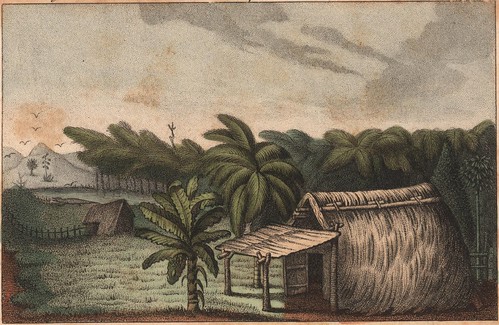



















3 comments :
If I may be pedantic, the "sea cucumber" actually looks more like a Portuguese Man O'War.
It's definitely a Man-O-War.
Yep, thanks. I've added a note with the illustration.
Post a Comment
Comments are all moderated so don't waste your time spamming: they will never show up.
If you include ANY links that aren't pertinent to the blog post or discussion they will be deleted and a rash will break out in your underwear.
Also: please play the ball and not the person.
Note: only a member of this blog may post a comment.